TREES
(eight of them)
Today I went to Battelle Darby Metro Park, planning for the field trip tomorrow. There are trees there. Who knew? As Gabriel Popkin explained so well in her article (LINK), a lot of otherwise well-educated people are “tree blind.” I’m a botanist, so I guess I’m somewhat less tree blind than most folks, but still have a lot to learn, especially about oaks and hickories …and pines …and hawthorns, and…
Eastern Cottonwood
(Populus deltoides)
In the Wet Prairie area, a former agricultural site where the natural drainage was restored about 8 years ago and planted to prairie, eastern cottonwood is coming in great!
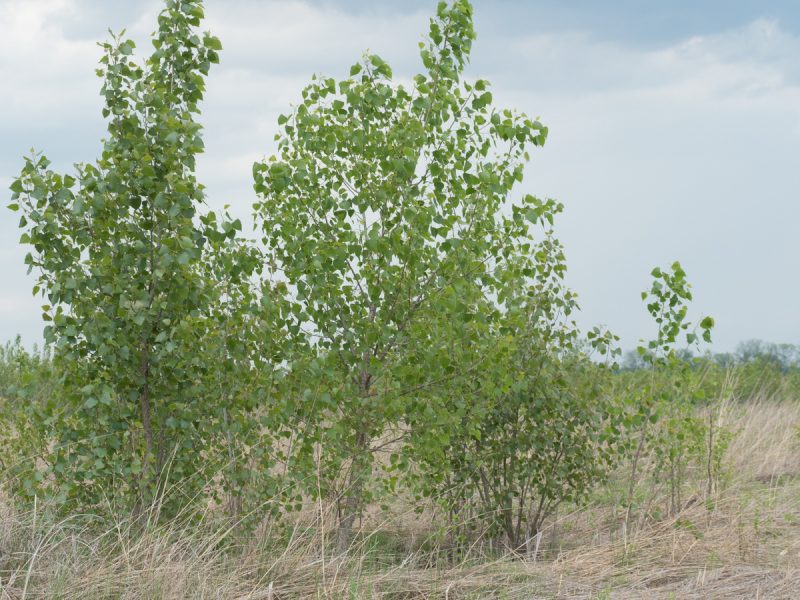
Eastern cottonwood trees at pond edges at Battelle Darby Metro Park.
This is a fast-growing lowland species, in the same genus (Populus) as aspen. Here’s a tree joke: Question: Why do places like Indonesia, India and China have so many aspen and cottonwood trees? Answer: Because those are very Populus places!
Eastern cottonwood leaves are distinctively triangular. The specific epithet “deltoides” in in reference to the leaf shape.
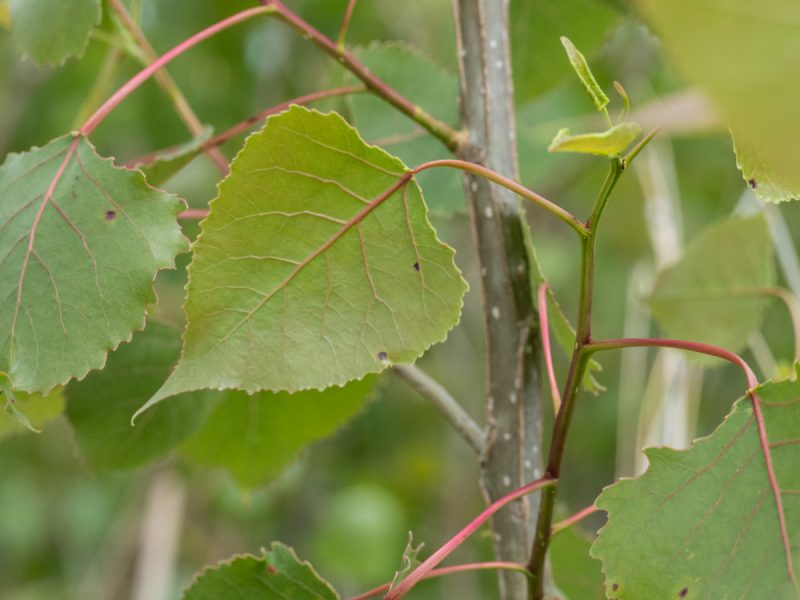
Eastern cottonwood leaves are triangular (deltoid).
Aspen and cottonwood leaves tremble in the slightest breeze because they have flattened petioles. (I call them “linguine leafstalks.”)
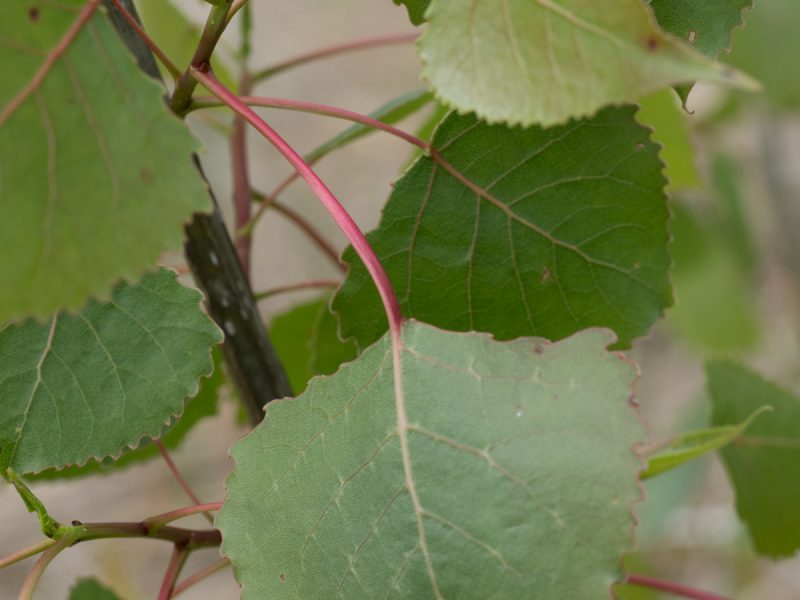
Linguine leafstalk!
While I was there, birds were singing. There are birds at the park. Who knew? This is a Virginia rail, that apparently has a nest crazy close to the path and apparently (no pun intended) didn’t like having me there at all, not one bit.
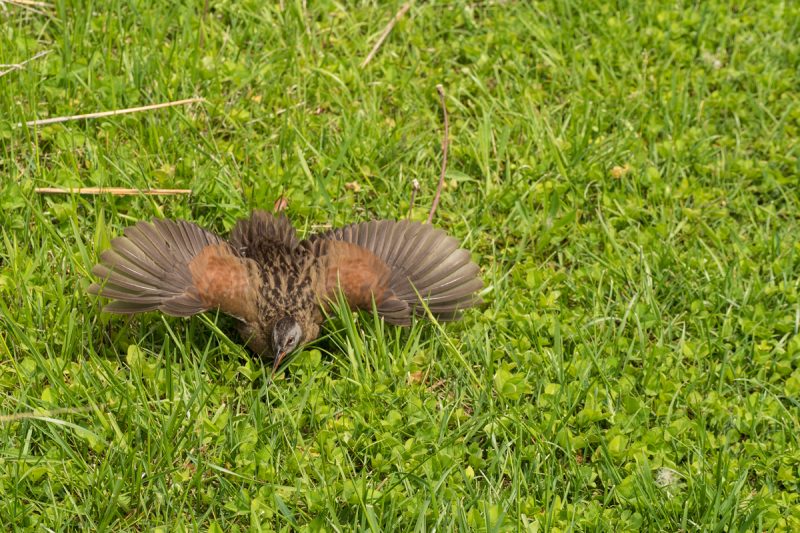
Virginia rail (not a tree) at Battelle Darby Metro Park.
American sycamore
(Platanus occidentalis)
American sycamore is also a lowland tree, occurring mainly along rivers. This huge individual was there when this area was a farmed.
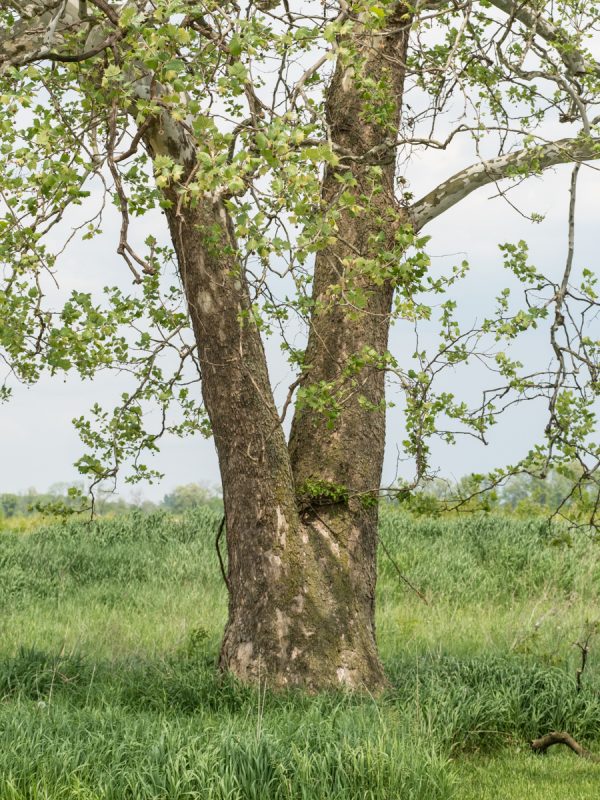
American sycamore at Battelle Darby Metro Park
Sycamore can get very big! In “Flora of West Virginia,” P. D. Strausbaugh and Earl L.Core mention some pioneers named John and Samuel Pringle who lived in a hollow sycamore tree near the present site of Buckhannon (Upshur County WV) from 1764 to 1768. Sounds like fun, but it could get old after a while. (“I am so sick of this sycamore!”)
American sycamore is sometimes called “buttonwood” A web site called “Dave’s Garden” (LINK) has an explanation, saying the name is self-explanatory as it was a favorite wood for making buttons. Dave also tells us that the New York Stock Exchange was founded in 1792 according to a pact made beneath a sycamore growing along Wall Street, henceforth called the “Buttonwood Agreement.”
Sycamore trees produce their tiny wind-pollinated flowers in globose heads. Here’s a pistillate (female) flower cluster.
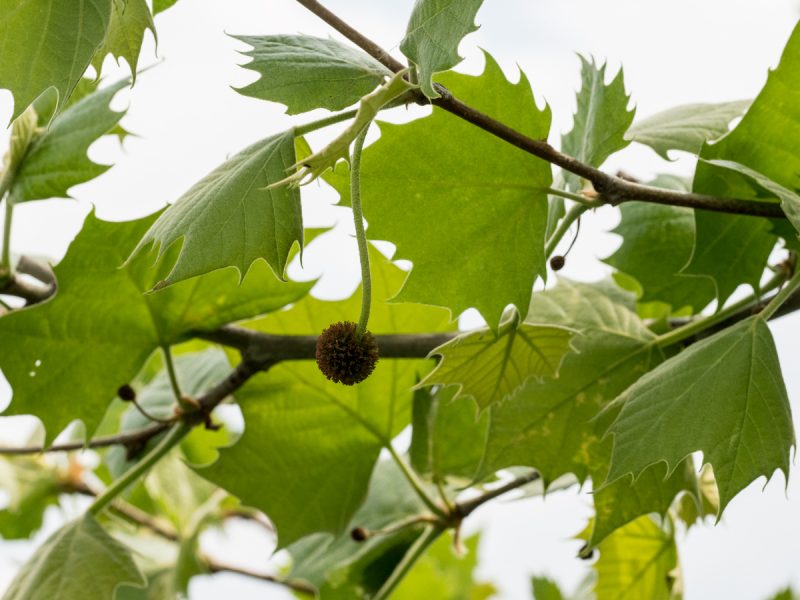
American sycamore flower cluster.
Ohio Buckeye
(Aesculus glabra)
Ohio buckeye is a distinctive small tree, owing to its large, oppositely arranged palmately compound leaves. In places, some of the leaves display an interesting abnormality –they are drooping.

Buckeye with drooping leaf caused by the buckeye petiole borer
As explained so well by Joe Boggs, writing for OSU Agricultural Extension HERE (link) this is caused by the presence of the larvae of a small native moth called the Buckeye Petiole Borer (Proteoteras aesculana). Eggs are laid on the leafstalk and a caterpillar bores into it, where it devours some of the contents, cutting off circulation to the leaf, which eventually dies and drops to the ground.
Red/slippery elm
(Ulmus rubra)
Elm (genus Ulmus) have leaves that are simple in complexity, with a doubly-serrate margin, and a peculiarly unequal-sided leaf base. There are two common species in Ohio –American elm (U. americana) and red/slippery elm, U. rubra. They are quite similar. Red elm leaves are more scratchy above than are those of American elm, and there are also some differences in the bark and the fruits.
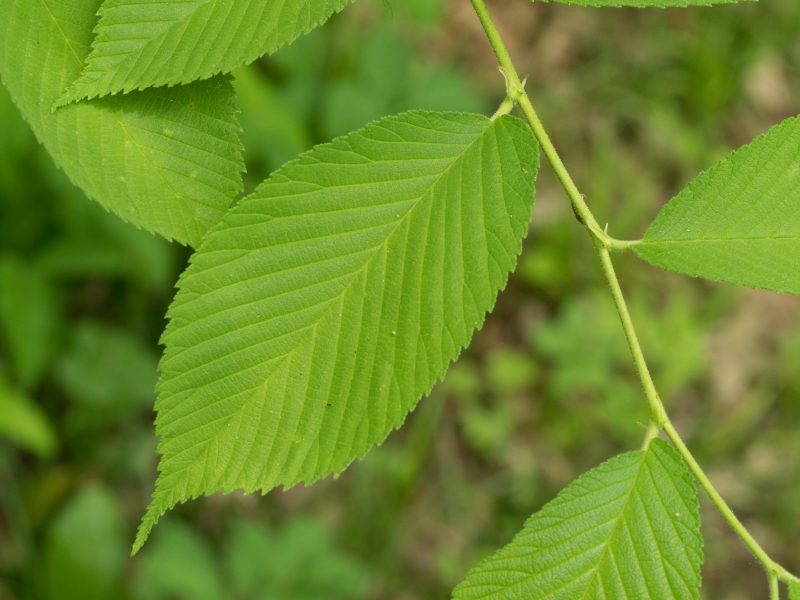
Elm leaves are simple, doubly-serrate and have an unequal-sided base.
In North America, elm tree populations are a mere remnant of what they once were. As explained very well by the Morton Arboretum, the disease –which is probably of Asiatic, not Dutch, origin was accidentally introduced to the U.S. in the 1930’s. It is a fungus that is carried by two species of bark beetles. All of our native elms are susceptible. The fungus blocks the water-carrying xylem tissue, causing affected branches to wilt and die. Because elms reproduce at an early age, there are still elms around, just not many forest giants like there once were. In her “tree blindness” article, Popkin mentions several other introduced tree pathogens, citing primarily the emerald ash borer as a consequence of global trade, whicj is noted to be “only the latest iteration of this sad story; chestnuts, hemlocks and elms have already taken major hits from foreign pests.”
Hackberry
(Celtis occidentalis)
Hackberry is a member of the elm family (Ulmaceae) and shares with elms the overall leaf appearance –simple, alternate, doubly-serrate, and with an unequal-sided leaf base.
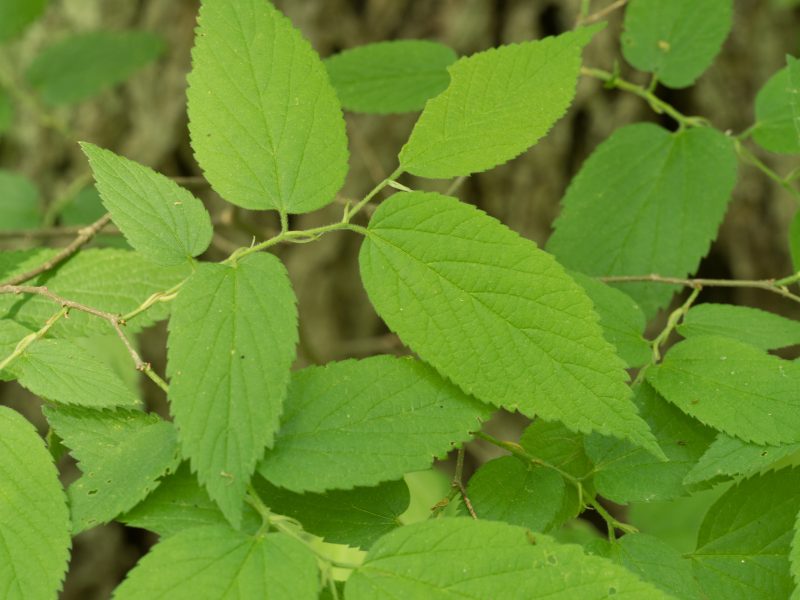
Hackberry is an indistinctive tree, isn’t it?
Just based on the leaves, hackberry is a pretty indistinctive tree. It looks vaguely elm-like. In fruit, it stands apart from elms by bearing little pea-sized drupes, very unlike the dry flat winged samaras of elms. Hackberry bark is more deeply furrowed than any other Ohio tree. Later in the season look for little pencil-eraser shaped projections on the bottoms of hackberry leaves that are galls caused by a psyllid (a type of true bug in the order hemiptera). According to the Texas A&M extension service, these litle bugs sometimes enter homes!
Black walnut
(Juglans nigra)
When we started our class on May 9, the plan was to have specimens of 8 particular trees, including black walnut. That turned out to be a challenge missed, as they hadn’t quite leafed out yet.
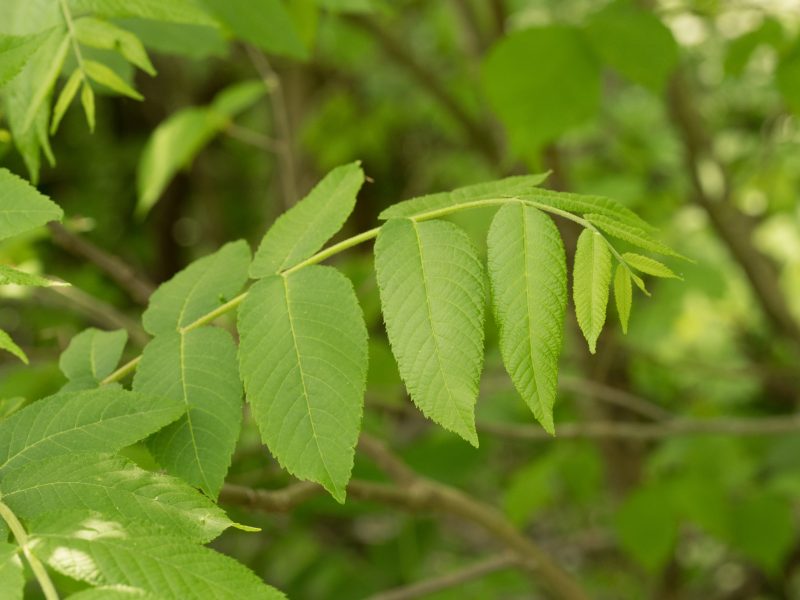
Black walnut finally emerges n mid-May!
Black walnut is a dramatic tree. It is most famous for being allelopathic, producing a toxic compound, juglone, that permeates the soil in a wide radius around a tree, and inhibits the growth of other plants. The University of Minnesota extension service lists plants according to their susceptibility to the toxin. Alfalfa, peppers, potato, eggplant and grape don’t fare very well. Some trees do OK though in the vicinity of a warrior walnut; redcedar, cherry, maple and elm are resistant. That makes sense, as the forest trees evolved in forests where walnuts were also prevalent, so adaptation seems likely.
Sugar maple
(Acer saccharum)
The “M” in “Madcaphorse, maples have opposite leaves. In out area all but one (boxelder maple) have simple leaves that are palmately lobed.
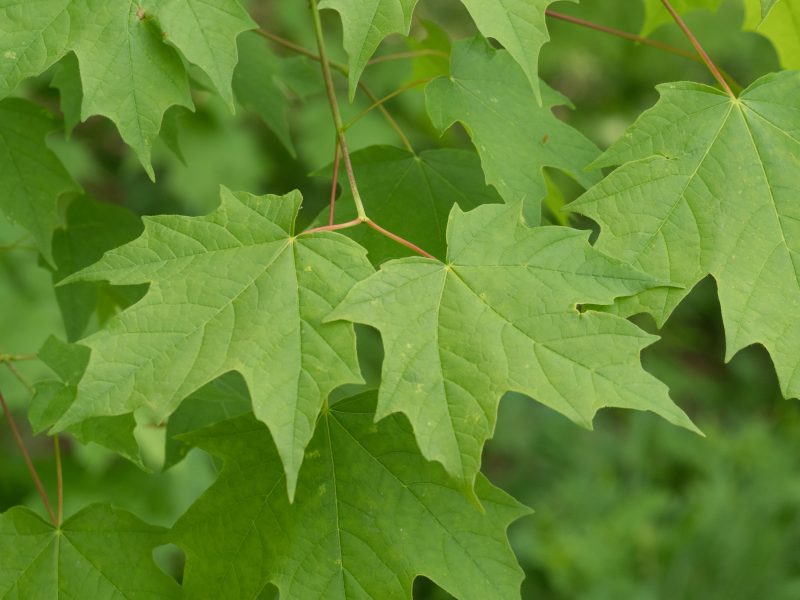
Sugar maple is an opposite leaved tree.
Sugar maples are nice and all, and yes they are native, but many forest ecologists are alarmed that sugar maple is doing too well. AS documented in a recent Proceedings of the 19th Central Hardwood Forest Conference, sugar maple is displacing oak species in upland forests throughout the northeast and midwest. The shift is attributable to disturbance, habitat fragmentation, and other biotic
pressures.
Redbud
(Cercis canadensis)
This is the tree the artists and editors of the New York Times used to illustrate their “Tree Blindness” article. A good choice, as it is striking in many respect and I imagine it is indeed a great thrill to watch as “pollen-drunk” bumblebees forage on the flowers.
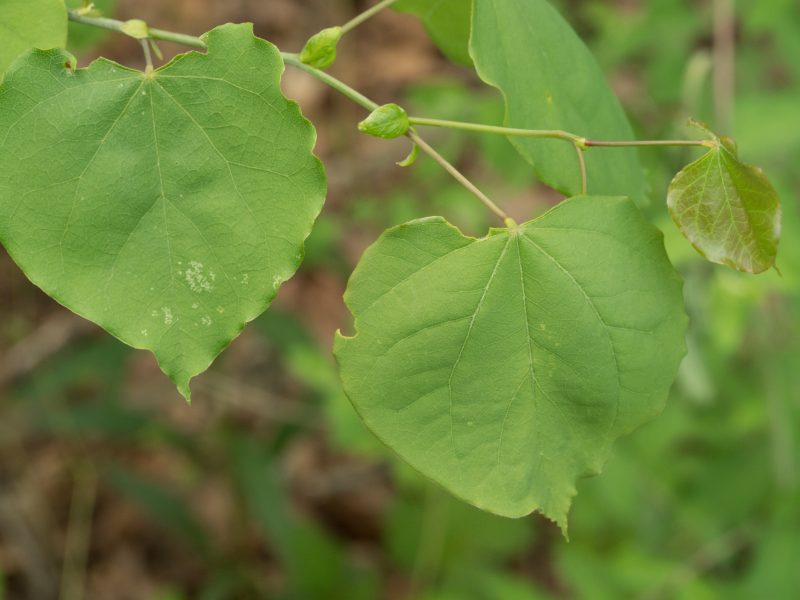
They should move Valentine’s Day to May so that these little hearts could be put to good use!
